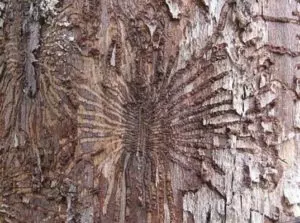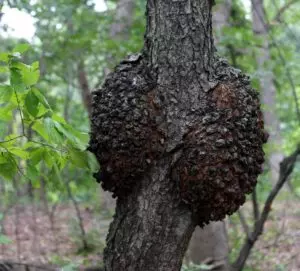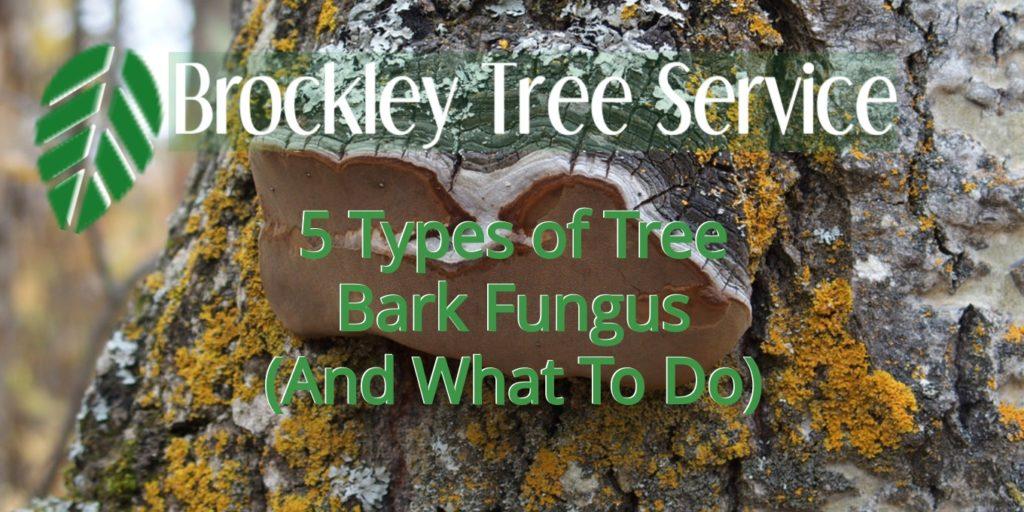It won’t be long until the trees begin to come out of their dormancy and start to bud with leaves, blossoms, and new growth. However, coming out of this long winter’s nap leaves them (no pun intended) very susceptible to fungal infections, many of which start in the bark. These infections can spread to the entire body, and without proper care these trees can lose their leaves, fruit, and limbs as they slowly die.
Fungal diseases in the bark are fairly easy for trained arborists to deal with, but the sooner they are caught, the better! Here are the big five fungal diseases we cope with in Ontario and what you should do to prevent them from harming your tree.
Beech Bark Disease
Beech bark disease is a newer threat affecting beech trees (Fagus grandifolia), and it’s brought about by native nectria fungus pairing up with the invasive European beech scale insect. The insects feed on the beech sap by burrowing into the bark, and once inside, the nectria fungus on the beech scale colonize the bark and interior of the tree. The resulting infection produces cankers, oozing sores and blisters in the bark that can cover much of the trunk. It also weakens the tree, making it vulnerable to other stresses.
This disease has resulted in a lot of dieback throughout Eastern Canada and the United States but only recently has been identified in southern Ontario. If your tree is very valuable to you, chemical treatment is available and should be used before the insects and fungus spread to other trees. Interestingly, some beech trees are resistant to the infection, and if one tree is unaffected in a group of infected trees, it can be a great source of fungal-resistant seeds.
Dutch Elm Disease
Dutch elm disease is an invasive fungal infection that was first identified in Ontario in 1946. It can be spread by both the  native elm bark beetle and the invasive European elm bark beetle. These beetles, covered in fungal spores, dig into the bark; while they munch away on the healthy tree sap, the fungus spreads into the tree’s sap-conducting tissues. Infections cause wilting and browning of the foliage and can kill a tree within one to three years.
native elm bark beetle and the invasive European elm bark beetle. These beetles, covered in fungal spores, dig into the bark; while they munch away on the healthy tree sap, the fungus spreads into the tree’s sap-conducting tissues. Infections cause wilting and browning of the foliage and can kill a tree within one to three years.
If you have elm trees on your property, careful monitoring is your best prevention. Insecticides can be used in the spring and fall to kill the elm bark beetles, and a fungicide can be injected into your tree to rid its system of Dutch elm disease.
Butternut Canker
Affecting butternut trees and certain members of the walnut family, butternut cankers are caused by the fungus Ophiognomonia clavigignenti-juglandacearum (try saying that even one time fast). In some native US butternut populations, the death rate from this fungal infection can be up to 90%. This has lead to butternut trees being placed on Ontario’s Endangered Species list.
To combat this infection, start by identifying the butternut trees in your area and noting the formation of cankers on them. If they have leafless and dying branches, black fluid oozing out of cracks in the bark (or a stain from past oozing), loose bark, or dark cankers, call an arborist as soon as possible. Consider planting healthy butternut trees on your property to keep the species alive (however, this would require you to pay very close attention to the health of the tree).
Black Knot
 Black knot is caused by an infection of the fungus Apiosporina morbosa. This tree bark fungus causes tarry, black swellings on branches that can slowly kill tree limbs. It is now widespread throughout Canada, and infections can rip through fruit tree populations like cherry, plum, and apricot. Because these swellings start as small green growths, it can be easy to miss the fungus; it can take two or three years for the swelling to turn black and release their spores. Black knot doesn’t just cause aesthetic problems, and if the infection is let alone, it can kill the branches and the tree.
Black knot is caused by an infection of the fungus Apiosporina morbosa. This tree bark fungus causes tarry, black swellings on branches that can slowly kill tree limbs. It is now widespread throughout Canada, and infections can rip through fruit tree populations like cherry, plum, and apricot. Because these swellings start as small green growths, it can be easy to miss the fungus; it can take two or three years for the swelling to turn black and release their spores. Black knot doesn’t just cause aesthetic problems, and if the infection is let alone, it can kill the branches and the tree.
To combat black knot, it’s important to prune the infected branches during late fall, winter, or early spring, when the trees are dormant. Proper disinfection of the blades used to prune the trees is important, as infected equipment can spread the fungus; call an arborist when you notice black knot on your trees.
Black Rot
Another ominous disease that affects fruit trees in Ontario, black rot is caused when the bark of hardwood fruit trees is infected by the fungus Botryosphaeria obtusa. This fungus gets into plum and apple trees through wounds in bark caused by insects, natural stressors, and/or improper pruning. It causes cankers that first appear on limbs as reddish-brown discolouration in the bark; starting out small, these cankers can get up to 50 centimetres in length along the infected limb, cracking the bark and killing it. As time passes and the cankers get worse, the wood turns black and shrinks, causing the bark to peel back. The limbs weaken and may break from the weight of the fruit. Infections on the main trunk, particularly on young trees, can weaken and kill trees prematurely.
Black rot is a serious scourge to orchards, and should be dealt with as vigorously as possible. It’s important to prune out diseased limbs ASAP and remove the clippings from the property, as black rot can survive on dead tissue. Fire is the best tonic for this wood! Woodpiles can be a major source of black rot so they shouldn’t be on or near fruit orchards. If there’s a spread of the fungus, try to locate surrounding woodlots and see if there are hardwood trees infected with the disease. Do your best to remove and burn these trees to decrease the spread of disease (of course, with permission from the potential owner and under safe conditions!).

